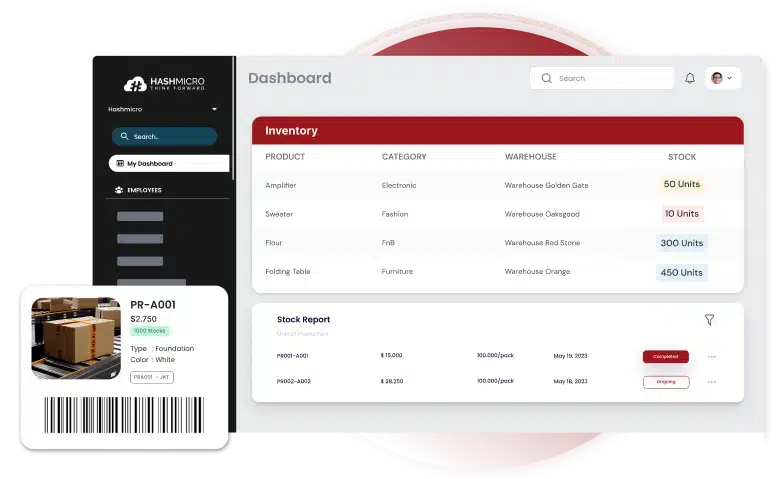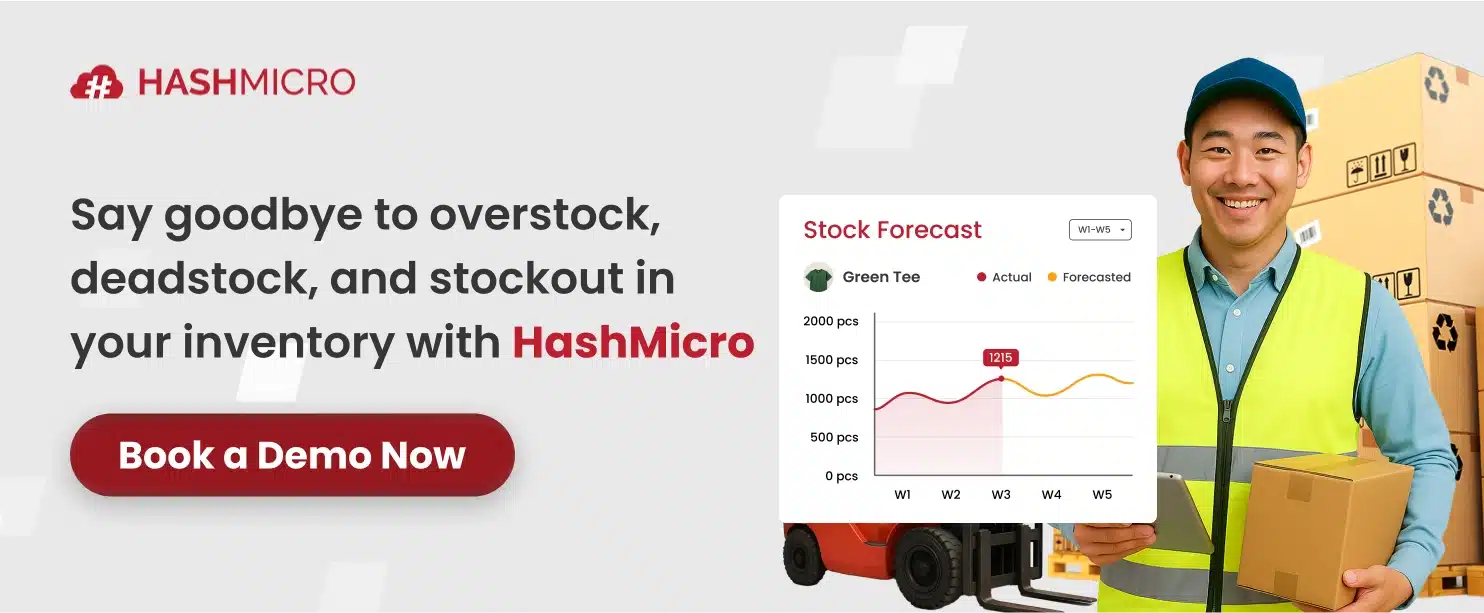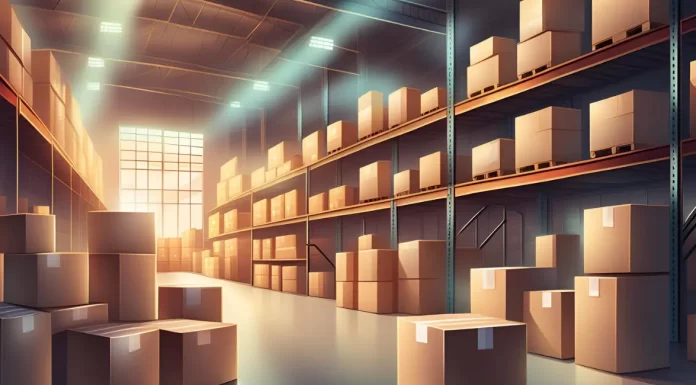Have you ever wondered if your inventory optimization strategy truly works? I’ve seen how easily businesses fall into the trap of overstocking and tying up cash, or facing stockouts at the worst moments. It’s a constant balancing act.
When I manage inventory across multiple warehouses, I know how tough it is to maintain visibility and efficiency without the right system. Tracking manually leads to wasted time, higher costs, and missed sales opportunities.
That’s why I rely on real-time tracking, demand forecasting, and automation to keep stock levels optimal. If you’re ready to take control of your inventory, try our free demo today and see how HashMicro can help streamline your operations.
Key Takeaways
|
What is Inventory Optimization?
Inventory optimization, for me, is a strategic process of managing stock levels to meet demand while keeping costs under control. These costs include storage, logistics, and capital tied up in excess inventory. By optimizing effectively, I can avoid both overstocking and shortages, ensuring smooth day-to-day operations.
One key aspect I focus on is leveraging advanced tools for real-time inventory tracking. With these tools, I can monitor stock movements, forecast demand more accurately, and make better data-driven decisions. Using automation and analytics allows me to balance supply and demand with greater precision.
When my inventory is well-optimized, cash flow improves, logistics costs drop, and operations run more efficiently. It also helps me avoid costly mistakes like over-ordering or stockouts. Maintaining the proper stock levels ultimately boosts profitability and streamlines the entire supply chain.
Why is Inventory Optimization Important?
From my experience, inventory optimization isn’t just about managing stock; it’s about creating balance, efficiency, and profitability across every part of the business. Here’s why I believe optimizing inventory is one of the smartest decisions any company can make:
- Maintains profitability: Prevents both overstocking, which ties up cash, and stockouts, which cause missed sales.
- Improves forecast accuracy: Helps predict demand more precisely, reducing waste and shortages.
- Reduces operational risks: Minimizes the impact of supply chain disruptions and unexpected delays.
- Enhances efficiency: Streamlines inventory across multiple locations and suppliers for smoother operations.
- Adapts to market changes: Keeps your business agile amid shifting customer demands and seasonal trends.
- Drives data-driven decisions: Leverages analytics and automation to maintain optimal stock levels and maximize performance.
How Does Inventory Optimization Work?
In my experience, effective inventory optimization starts with understanding that accurate data and continuous monitoring should drive every decision. Here’s how I approach optimizing inventory to keep operations efficient and cost-effective:
- Rely on data and analytics: I use real-time data and algorithms to determine the ideal stock levels for each SKU.
- Forecast demand accurately: I analyze historical sales, market trends, and seasonal patterns to predict future demand.
- Evaluate key operational factors: I consider lead time, processing time, and storage costs before setting inventory levels.
- Set reorder points and safety stock: I define when to reorder and maintain buffer stock to prevent shortages.
- Continuously monitor and adjust: I regularly review inventory performance and adapt plans to reflect real-time market changes.
Key Components of Inventory Optimization

To make sure I always have the right amount of product ready for fulfillment, I carefully consider storage capacity, current stock levels, supplier lead times, seasonal trends, and upcoming campaigns.
Here’s a breakdown of the key components in inventory optimization:
- Demand forecasting: I analyze past sales data to predict future demand, reducing stockouts and keeping customers satisfied.
- Inventory replenishment: I ensure items are restocked promptly from suppliers or storage so orders are fulfilled quickly without delays.
- Inventory levels: I maintain balanced stock levels to prevent excess costs, avoid shortages, and keep cash flow healthy.
- Stock rotation: Stock rotation refers to organizing and using older stock before newer stock to ensure that products don’t sit on shelves too long, which can lead to spoilage, obsolescence inventory, or depreciation.
- Inventory storage: I organize storage strategically to meet demand efficiently while allowing room for business growth.
Benefits of Inventory Optimization
Optimizing inventory affects every part of my business performance. By improving how I handle inventory, I can reduce waste, cut costs, and boost overall efficiency. Here are some key benefits I’ve experienced from optimizing my inventory processes.
- Reduce operational costs: Implementing effective inventory optimization strategies can reduce inventory holding costs by 15%, minimizing overstocking and warehousing expenses.
- Boost customer satisfaction: According to Procter & Gamble, inventory optimization helps reduce stockouts by 25% and improves order fulfillment accuracy by 20%, leading to happier customers and fewer lost sales.
- Gain faster delivery options: The same Procter & Gamble study found a 10% increase in inventory turnover, enabling products to move more quickly and reach customers faster.
- Balance inventory levels: Research from the Archives of Computational Methods in Engineering revealed that AI-driven inventory optimization reduces excess inventory by 30%, helping maintain balanced stock levels.
- Prevent overstocking: The same review showed that AI-based optimization improves supply chain efficiency by 15%, helping businesses avoid unsellable or obsolete inventory.
Difference between Inventory Management and Inventory Optimization

Understanding the difference between inventory management and inventory optimization is crucial for running my business effectively. While both are closely related, each serves a unique purpose in how I manage stock. Let me break down how these two approaches differ and why they matter to my operations.
| Aspect | Inventory Management | Inventory Optimization |
| Objective | Ensures productivity and efficiency across all inventory-related operations. | Focuses on maximizing profit margins while minimizing losses. |
| Technology Utilization | Utilizes cloud-based inventory systems, IoT, AI, and automation to enhance supply chain visibility and operational efficiency. | Leverages advanced analytics and forecasting models to align inventory levels with demand fluctuations. |
| Stock Control Approach | Manages overall inventory flow, ensuring stock availability and operational continuity. | Prevents excess stock and shortages by optimizing stock levels to reduce waste and storage costs. |
| Impact on Business | Enhances operational efficiency in production, warehousing, and logistics. | Improves financial performance by reducing unnecessary costs and capturing sales opportunities. |
| Risk Management | Focuses on maintaining stock levels for smooth operations. | Mitigates risks related to overstocking, obsolescence, and demand fluctuations. |
Challenges to Optimizing Inventory Management
Balancing “just enough” and “not too much” inventory has always been a challenge for me. Traditional forecasting depends on past data, which limits accuracy. Without modern tools, achieving proper optimization becomes nearly impossible.
Some of the most common challenges I faced include:
- Outdated systems: Manual and disconnected systems can’t process extensive, unstructured data, making AI, machine learning, and analytics essential for accurate forecasting.
- Rapidly changing customer demands: Consumers now expect faster delivery and personalized products, requiring more precise and agile inventory optimization.
- Rising competition: Industry 4.0 technologies enable businesses to scale quickly, pushing companies to optimize inventory for a more potent competitive edge.
- Weather events and natural disasters: Unpredictable disruptions like storms and wildfires challenge supply chains, making advanced analytics vital for quick and effective response.
Best Practices of Inventory Optimization

Inventory optimization, for me, goes beyond simply predicting demand accurately. To truly optimize my inventory, I need to rethink how stock is stored, ordered, and managed, reassess key metrics, anticipate seasonal trends, and continuously refine my overall inventory strategy.
Here’s a step-by-step guide to optimizing inventory levels for your business:
1. Master Demand Forecasting
The first step to effective inventory optimization is accurate demand forecasting based on historical trends and future projections. Using inventory management software and expert insights helps predict stock needs more precisely and prevent shortages or overstocking.
2. Create a Standardized Inventory Management Plan
A unified and consistent approach is key to successful inventory optimization. Using an efficient system, whether a spreadsheet or management app with advanced features of inventory management, and setting clear SOPs for ordering, storing, and tracking inventory, ensures smoother, more accurate operations.
3. Oversee Inventory from Arrival to Use
With a solid system in place, it’s essential to track every item from arrival to sale or use in production. Using a physical inventory app with barcode or QR code scanning simplifies tracking and minimizes errors.
4. Track SKUs Effectively
Syncing SKUs with an inventory management solution enables real-time tracking, updates, and control across all channels, preventing overselling or stockouts. This integration helps maintain optimal stock levels and streamlines the entire inventory process.
5. Monitor Supplier Performance
Beyond tracking demand, assessing supplier reliability is crucial since delays or poor-quality stock can disrupt operations. Using inventory management software simplifies inventory reconciliation, improves accuracy, and generates detailed inventory movement reports for better decision-making.
Better yet, an inventory system that’s completely tailored to the companies’ needs, so that they don’t need to adjust their workflows around the system. Click on the pricing calculator banner below to get your customized quote based on what you need.
Make Inventory Optimization Effortless with Inventory Software

Managing inventory is about balancing stock levels, predicting demand, and ensuring efficient supply chain operations. I trust HashMicro Inventory Management Software to automate replenishment, set smart reorder points, and provide real-time visibility, streamlining forecasting and supplier management.
HashMicro offers powerful features to optimize your inventory:
- Vendor Portal: Automates order and payment management to streamline procurement and prevent stock shortages or overstocking.
- OCR for RFQ Processing: Uses OCR technology to digitize RFQs, minimizing manual errors and accelerating order processing.
- Automated Vendor Rating and Reviews: Evaluates vendors automatically based on performance metrics to ensure consistent reliability and accountability.
- Cost and Budget Control: Tracks procurement savings and spending limits to maintain financial stability and optimal stock levels.
“Inventory optimization is about balancing availability, cost, and demand. With data-driven insights, businesses can turn inventory into a true competitive advantage.”
— Angela Tan, Regional Manager
Conclusion
Inventory optimization balances stock levels to meet customer demand while minimizing holding costs. It involves accurate demand forecasting, real-time tracking, and efficient supplier management to avoid stockouts or overstocking.
HashMicro Inventory Software gives me a solid, all-in-one solution to optimize inventory management effortlessly. Its automation tools help me track stock in real time, streamline supplier interactions, and automate replenishment processes.
By choosing HashMicro, I can save time, reduce costs, and boost operational efficiency. I invite you to try our free demo and experience how it can take your inventory management to the next level!
Warning: Undefined array key "med" in /home/hashmicr/public_html/blog/wp-content/plugins/insert-headers-and-footers/includes/class-wpcode-snippet-execute.php(419) : eval()'d code on line 281

FAQ about Inventory Management Software
-
-
How does inventory optimization differ from traditional inventory management?
Traditional inventory management focuses on tracking stock levels and ensuring availability, while inventory optimization takes a strategic approach to balancing supply and demand. Optimization aims to minimize holding costs, reduce waste, and improve profitability by leveraging data-driven insights and automation.
-
What role does technology play in inventory optimization?
Technology, including AI, machine learning, and real-time inventory tracking, helps businesses analyse demand patterns, automate replenishment, and optimize stock levels. These tools enhance accuracy, reduce human errors, and improve overall efficiency in managing inventory.
-
How can inventory optimization improve cash flow?
By maintaining optimal stock levels, businesses avoid tying up excess capital in unsold inventory. This ensures better cash flow management, allowing companies to allocate resources effectively while preventing overstocking or stockouts that can impact revenue.
-














